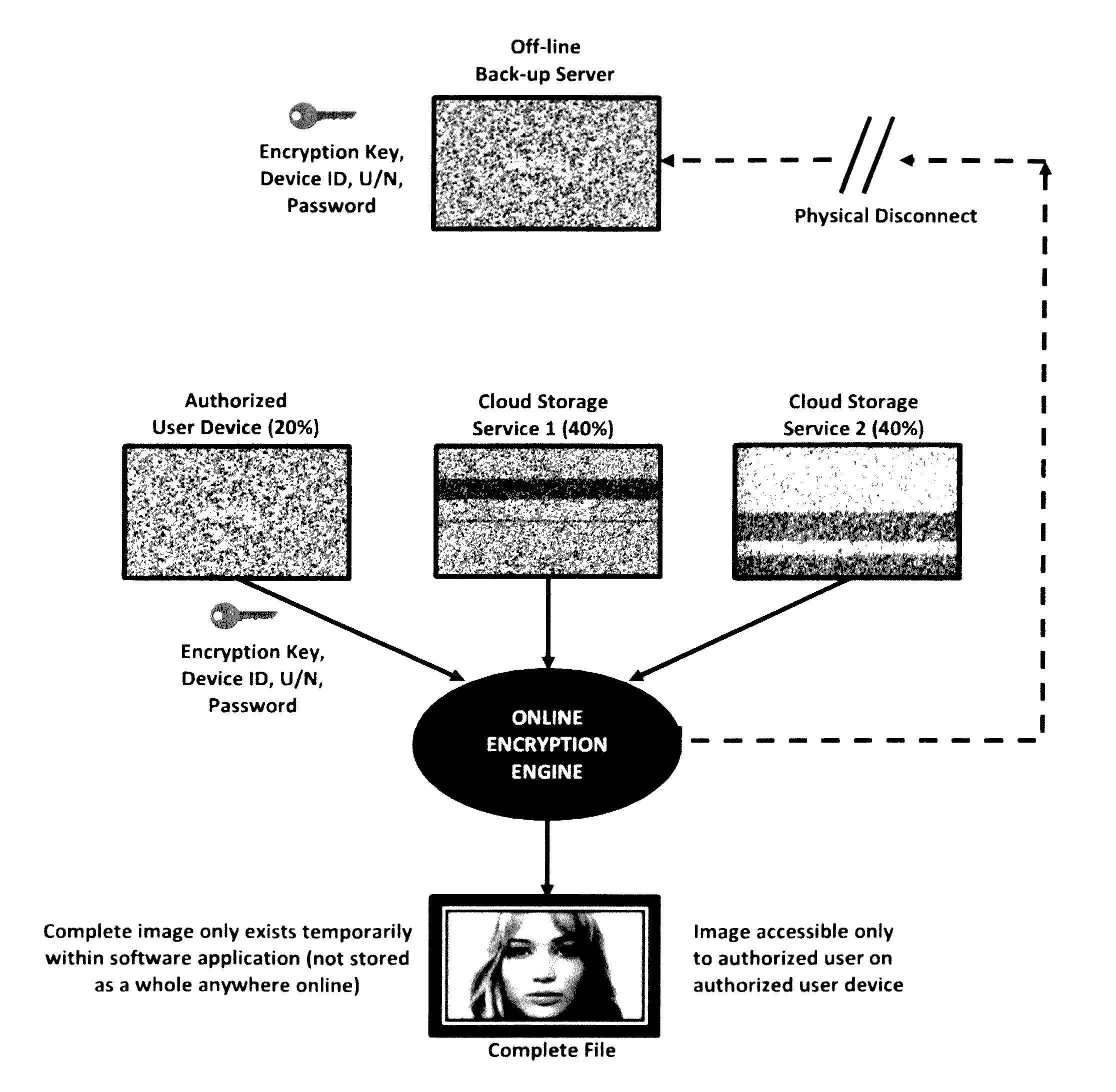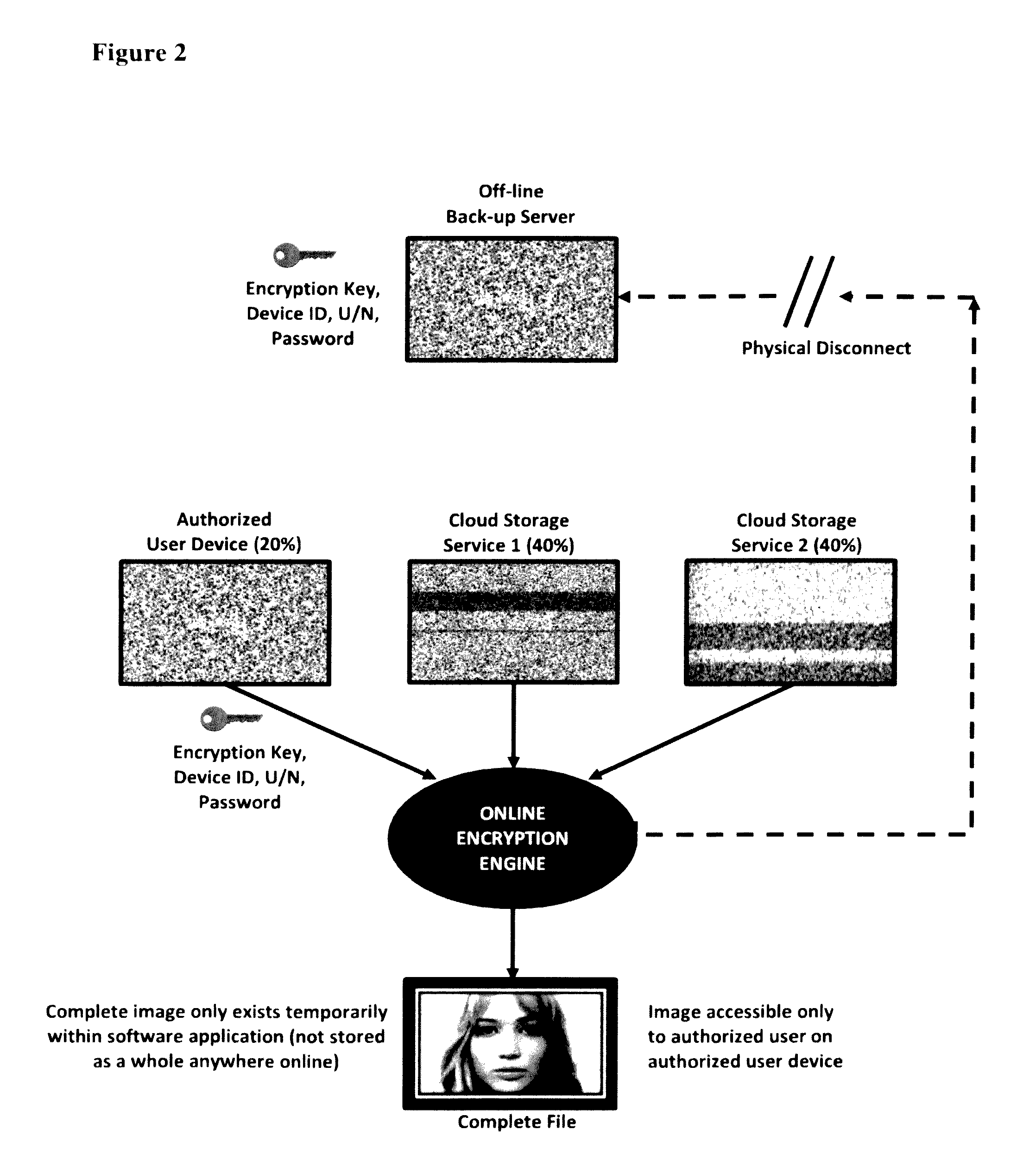User-managed security for dispersed network data storage
a network data storage and user-managed technology, applied in the field of user-managed network security architecture, can solve the problems of limited maximum liability to unauthorized distribution of data, incomplete and decrypted files cannot be re-compiled or re-created, etc., to eliminate the liability of all external security breaches, reduce the size of data payloads, and minimize the effect of large network latency and file access delays
- Summary
- Abstract
- Description
- Claims
- Application Information
AI Technical Summary
Benefits of technology
Problems solved by technology
Method used
Image
Examples
first embodiment
[0032]In the present invention as shown in FIG. 1, a user-managed encrypted dispersed software architecture for a wide area enterprise network hardware configuration comprised of three online servers and one off-line back-up server is compared against conventional RAID-6 storage architecture and conventional dispersed storage architecture using the same fundamental hardware configuration. Because of the three separate redundant copies of all data packets stored online combined plus off-line data storage capabilities RAID-6 architecture provides for a very high level of network reliability and data integrity (in the case of the data on one or two online servers becoming damaged or destroyed). However this high level of data redundancy also provides for large total data storage costs as online storage of one petabyte of data packets stored on a RAID-6 enterprise network requires total hardware data storage capacity exceeding four petabytes of data packets (including online batch trans...
second embodiment
[0036]In the present invention as shown in FIG. 2, user-managed encrypted dispersed storage architecture is applied to an online cloud network platform using two third party cloud service providers for all online storage of an image file as an example. Each file such as an image file can be spliced or encrypted into numerous symmetric and asymmetric configurations depending on the number of cloud service providers available. While the example shown in FIG. 2 indicates twenty percent of the file content of an image file is stored on the local authorized user device and forty percent of the file content is stored on each of the two third party cloud servers, numerous permutations of other file content distributions are possible and viable. In general, between 1% and 25% of each spliced encrypted data file portion should be stored on the authorized users' local device with the remaining 75% to 99% being stored equally between the number of online servers on the network. The optimized c...
PUM
 Login to View More
Login to View More Abstract
Description
Claims
Application Information
 Login to View More
Login to View More - R&D
- Intellectual Property
- Life Sciences
- Materials
- Tech Scout
- Unparalleled Data Quality
- Higher Quality Content
- 60% Fewer Hallucinations
Browse by: Latest US Patents, China's latest patents, Technical Efficacy Thesaurus, Application Domain, Technology Topic, Popular Technical Reports.
© 2025 PatSnap. All rights reserved.Legal|Privacy policy|Modern Slavery Act Transparency Statement|Sitemap|About US| Contact US: help@patsnap.com



